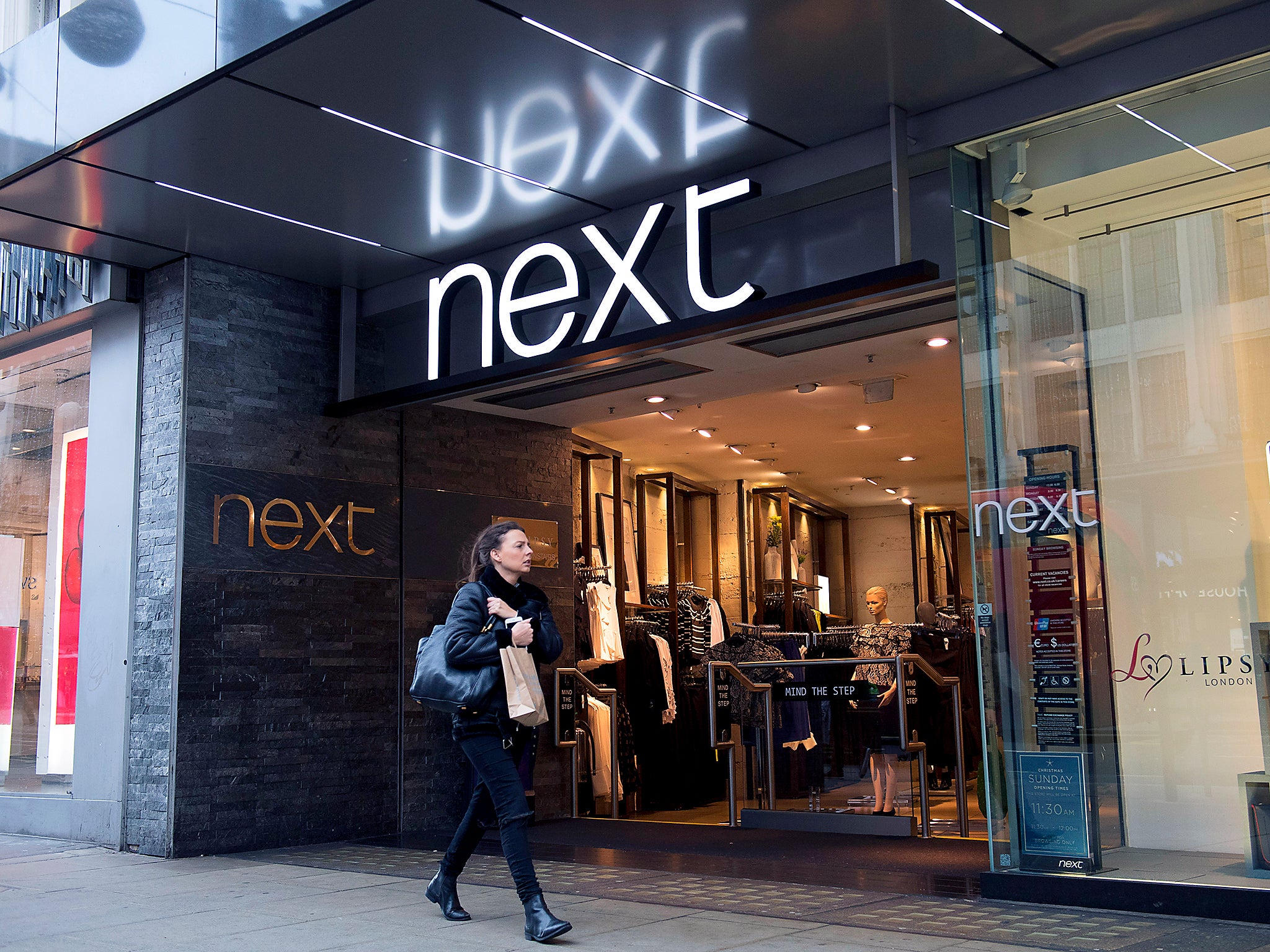Next's latest update shows it was right to question the future of its retail stores
The chain's online business leapt as sales through its stores continued to fall

Your support helps us to tell the story
From reproductive rights to climate change to Big Tech, The Independent is on the ground when the story is developing. Whether it's investigating the financials of Elon Musk's pro-Trump PAC or producing our latest documentary, 'The A Word', which shines a light on the American women fighting for reproductive rights, we know how important it is to parse out the facts from the messaging.
At such a critical moment in US history, we need reporters on the ground. Your donation allows us to keep sending journalists to speak to both sides of the story.
The Independent is trusted by Americans across the entire political spectrum. And unlike many other quality news outlets, we choose not to lock Americans out of our reporting and analysis with paywalls. We believe quality journalism should be available to everyone, paid for by those who can afford it.
Your support makes all the difference.Just over a year ago Next published a supremely bleak analysis of the High Street’s future.
In it, CEO Lord Wolfson opined that it was “legitimate to question the long term viability of retail stores and whether the possession of a retail portfolio is an asset or a liability”.
The clothes retailer’s latest update indicates that he wasn’t exaggerating.
The second quarter of the year once again demonstrated the stark divide between the two halves of the business.
Sales through the online channel streaked ahead by 12.5 per cent. The shops, by contrast, recorded a 5.9 per cent decline.
For the first half of the year overall, the former was up 15.5 per cent, the latter down by 4.5 per cent, to produce an overall gain for the business of 4.5 per cent.
Not too shabby, you might think, but the City was unimpressed having expected better still in the wake of the hot weather that has baked Britain, while noting that Next’s unambitious full year guidance was left unchanged.
It is perfectly possible to successfully sell clothes through bricks and mortar shops in the internet age. Primark does it with aplomb.
But its model is significantly different. The economics of online retail, with customers’ demands for free returns and deliveries, don’t work for a company that sells its goods at the sort of prices Primark specialises in. But its customers don't mind. They'll willingly go to its stores to take advantage because it is worth their while to do so.
With Next it's different. The company might specialise in basic clobber. It's reputation was built on that. But it expects its customers to pay for the privilege of buying from it. No wonder they're saying, fine, if you want that sort of price you best bring the clothes to us.
Retail stores can still be an asset and they can still make money. It just takes the right business model. Next's isn't that, even before one weights the potential impact of a bad Brexit (Lord Wolfson was a backer).
Are people still going to be willing to pay his prices after they’ve absorbed the economic impact? Even online?
Sky News this morning reported that Prime Minster Theresa May’s zombified Chequers plan will cost every household £500. It’ll be a lot more than that if the no deal the bookies are predicting becomes a reality.
Primark’s model is the one you’d fancy to succeed in the aftermath, assuming it can get stock out of that Kent lorry park the government is planning.
Join our commenting forum
Join thought-provoking conversations, follow other Independent readers and see their replies
Comments